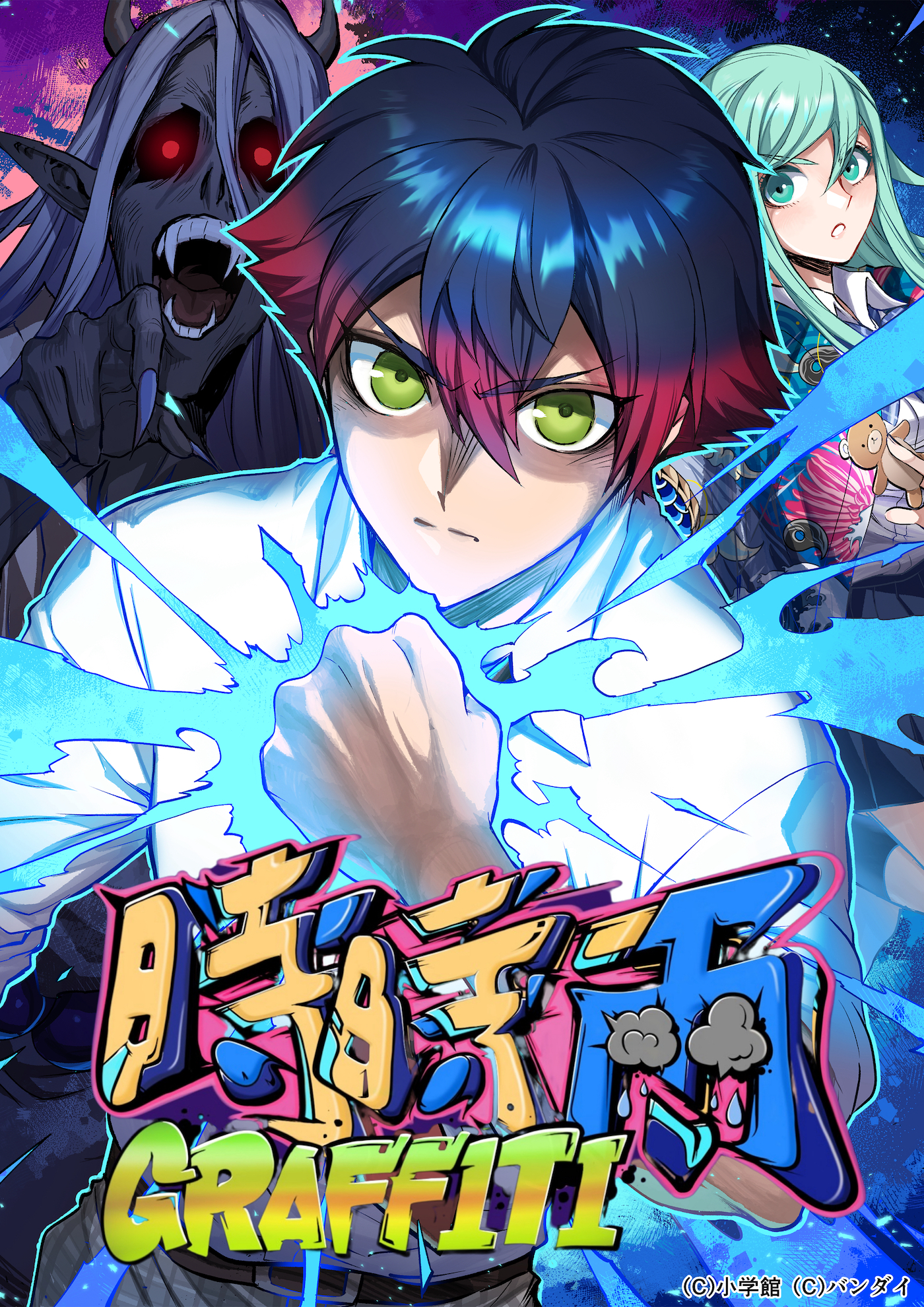「脚本はカメラを構えるように読む」人気WEBTOONネーム作家兼・指導者に聞く、上達への近道
インタビュー/ちゃんめい
WEBTOONでは、ひとりのクリエイターがプロットからネーム、作画までを担当するケースもありますが、多くのスタジオでは、各工程を専門スタッフが担当する分業制が一般的です。数ある工程の中でも今回は“マンガの設計図”といっても過言ではないネーム作業を担当する、ネーム作家にピックアップします。
お話をお伺いしたのは、『レベルドレイン -絶対無双の冒険者-』『転生魔術師の異世界生活 原作知識で世界最強』『時時雨GRAFFITI』などの人気WEBTOON連載でネーム作家として活躍する傍ら、FANBOXやYouTubeを通じて初心者のネーム指導を行うなど、後進の育成にも尽力されている橋本ライオン先生。ネーム作業の裏側、そしてネーム添削でよく見受けられる初心者が陥りがちなこととは……?
どうカメラを構えたらキャラクターが魅力的に映るか
── WEBTOONのネームづくりとはどんなことをするのか、まずは具体的な作業についてお伺いします。何から着手するのでしょうか。
── カメラを構える……!?


脚本のシーンをネームにしたもの
── シャッターを切った瞬間がネームになっていくんですね。ですが、現在ご担当されている『レベルドレイン -絶対無双の冒険者-』『転生魔術師の異世界生活 原作知識で世界最強』などはファンタジー作品なので、脚本だけで空間すべてを想像するのはなかなか難しそうです。
── まるで小説を読んでいるような感覚ですね。脚本にはセリフ、ト書き……どんな情報が描かれているのでしょうか。



脚本のシーンをネームにしたもの。「夜、窓の外を眺めているウィル」の1文から、雄大な景色を見下ろすウィルの姿が描かれ、より強く決意が伝わってくるように。
── ト書きが多い脚本と少ない脚本とでそれぞれネーム作業のやり方は変わりますか?
まずセリフを配置して読みやすさを見る
── 脚本を読み終わったらいよいよネームを描く作業に入られると思うのですが、何から取り掛かるのでしょうか?
── そのあとに絵を描かれていくと。
橋本:絵は、大きく分けて人物・背景・オブジェクトの3つの要素で成り立っています。オブジェクトは、バトルシーンで舞い散る火花であったり、場面を華やかにするための花びらだったりですね。
── オブジェクトを描く際に意識していることはありますか?
橋本:フルカラーという特性上、できるだけその場面が映えるようなオブジェクトを取り入れるようにしています。例えば、暗い部屋に蛍光灯がついているシーンだったら、そのまま描いても雰囲気が出ないので、あえて蛍光灯を消して月明かりの光で差し込む演出にしたり。読者さんの目に華やかに映るよう意識しています。
── ネームを元に、線画・着色とそれぞれの担当者が作業をしていくかと思いますが、ネームの段階でカラーなど細かいところまで指定されているのでしょうか?
橋本:自分のこだわりが特に強いシーンの場合は、朱書きでカラーを指定することもあります。ですが、あまり指定しすぎてしまうと、それに縛られて、結果的に固い絵になってしまうのかなと。だから、こだわりのあるシーン以外は、各々が一番だと思うクリエイティビティを発揮していただけるよう、後続の担当者にお任せしています。
ネーム作家が思う、WEBTOONマンガの3つの魅力
── ネーム作家として活躍されている橋本先生から見て、WEBTOONの魅力とはなんだと思いますか?
橋本:3つあると思っていて、まずは時間軸の表現。縦読みという仕様上、昼から夜に変わる瞬間や季節の移ろいをスクロールで表現できるんです。

橋本:2つ目は、横が有限である点を逆手に取って、コマ枠の線をオブジェクトに置き換えるといったユニークな表現ができるところ。例えば、これは『レベルドレイン -絶対無双の冒険者-』でキャラクターが攻撃を放つシーンですが、パンチを繰り出す手をコマの枠線にして、次のシーンへの切り替えを行う……これは横読みではできない表現ですよね。

── 確かに横読みでは見かけない表現です。
橋本:3つ目は、コマに遊びを効かせられる点。例えば、バトルアクションものだったら、骨などのオブジェクトをコマの周囲に散らすと立体感が出ます。

橋本:あとはキャラクターの攻撃に合わせてコマも切れていく表現などもできます。やっぱりWEBTOONは、読者さんのスクロールする手が止まらないような絵作りが重要だと思っていて。そのためには、どこを切り取っても味があるというか、面白味のある絵作りが欠かせないと考えています。

── お話を聞くほど、同じ漫画といえど、横読みとWEBTOONでは全く別物に感じます。
橋本:極論、横読みもWEBTOONも“面白いが正義”だと思うんです。ただ、面白さの見せ方、表現の方法がそれぞれ違うんですよね。例えば、横読みだったら5コマに1コマくらいの感覚で大きな見せゴマを作るとか、ヒキやめくりという方法があるじゃないですか。縦読みは形式上、横読みと全く同じ方法を取ることは不可能だけれど、見せゴマやヒキ・めくりに匹敵するような表現がWEBTOONでも生まれているんじゃないのかなと。具体的にどんな表現なのかはこれからしっかりと言語化して、FANBOXなどで展開していこうかなと考えていますが、これは横読みも経験してきたからこその気付きだと思います。
会社員からクリエイターに! ネーム作家としての転機とは
── 橋本先生のネーム作りについてわかったところで、これまでのご経歴を伺えますか。
橋本:昔から絵を描くことが大好きだったので、将来は絵に関する仕事に就きたいと思い、イラスト系の専門学校に通っていました。ですが、卒業した当時は自分のやりたいこととスキルがうまく合致しなくて……結果、会社員として営業や労務などの仕事に従事することになりました。
── 会社員からクリエイターに転身され、今に至るということでしょうか。
橋本:今から5〜6年くらい前ですかね。やっぱりどうしても絵の仕事に就きたいと思って、こちらの業界に転身しました。ですので、クリエイター歴としては5年くらい。実はまだまだ経歴が浅いんです。
── クリエイターに転身されてから受けてきたお仕事について教えてください。
橋本:企業様のマスコットキャラクターデザインやLP漫画、横読みの読み切りや短期集中連載。あと、一番長く引き受けていた案件だとYouTube漫画動画のイラスト担当。これは2年ほどやっていましたね。
── WEBTOONのネーム作家としての転機はなんだったのでしょうか。
橋本:先ほどお話ししたLP漫画や短期集中連載は、漫画・イラスト制作会社のフーモアさんからご依頼いただいたものだったのですが、一昨年の年末くらいにフーモアさんが「今後はWEBTOON事業に本腰を入れていく」という発信をし始めたんですよ。個人的にもWEBTOONはこれからさらに盛り上がるのではと肌で感じていて、非常に興味のある事業だったので、「何かお力になれることはないですか?」と自分からお声がけしたのがきっかけです。そうしたらネームをお願いしたいと相談されまして、WEBTOONのネーム作家としてのキャリアがスタートしました。
「ネームと完成稿の違いに注目」今でも続く習慣
── 初仕事はどんな内容だったのでしょうか。
── 横読みの経験はあるといえ、WEBTOONのネームを担当するのは初めてですよね?
橋本:そうなんですよ。一応、フーモアさんから指導書のような資料をいただいたので、それを自分なりに解釈してネームを描いていきました。難しかったのは、コマ間隔です。WEBTOONは縦が無限に使えてしまうので、絵と絵の間にどれくらいの余白を作れば良いのだろうと……かなり戸惑いましたね。作業するにあたって、著名な作品を読んで研究もしたのですが、いざ自分が描くとなるとかなり悩みました。今でこそ1話分に相当する70コマを大体2日くらいでこなしていますが、当時は冒頭のたった15コマを1日がかりで描いていましたね。
── 技術力向上のために、当時実践されていたことを教えてください。
橋本:自分が携わった作品を徹底的に読み返しました。実は、いざ完成稿を確認すると、自分が当初描いたネームから所々微調整されていることってよくあるんですよね。例えば、びっくりマークなどの漫符やキャラクターのため息を表現するエフェクト……それが完成稿では削除されていたり、あるいは別の表現に変更されていたり。そういった変更点は今でも必ず確認して、次の作品に活かすように心がけています。
── 完成したらそれで終わりではないと。すごくストイックですね!
橋本:僕は自分のことが大好きと言いますか(笑)自分の作品を見返したり、読者さんからのコメントを読むのがすごく好きなんです。読者さんのコメントで、「これどうなってんの?」と書いてあったら、この表現だと読者さんには伝わりにくいんだなと、アドバイスとして吸収するようにしています。結局は負けず嫌いというか、次は同じような修正が必要ないように、もう何も言えないぐらい良い作品を作ろう! と、そんな気持ちが根底にあります。
「無理に縦を使っている」「余白がない」初心者が陥りがちな落とし穴
── 橋本先生はFANBOXでネーム添削を受け付けていらっしゃいますが、初心者が陥りがちな落とし穴がありましたら教えてください。
橋本:一番多いのは、縦スクロールに固執し過ぎているパターン。WEBTOONだから縦を使わなければ! という気持ちはわかるのですが、無理に縦を使うことでシーンに合っておらずミスマッチになっている方が非常に多いです。あえて言葉を選ばずに言うと、“自分に酔っている”状態。無闇に縦に描くのではなく、縦スクロールにする必要性を考えなければいけないなと。

よくあるミスの一例。「特別な意味がない限り、キャラ全身絵のみでスマホ2画面近くとる必要はない」とのこと。
── どうすれば改善できるのでしょうか。
橋本:何を見せたいのか? を考えるのが一番だと思います。そのシーンで絵を見せたいのか、セリフを見せたいのか、背景を見せたいのか……そしてそれを見せるために何をしたら良いのか。もしセリフを見せたいなら、ただ吹き出しやフォントサイズを大きくするだけではなく、配置から見直す必要があると思います。サイズが小さくてもセリフを強調する方法もいくらでもあります。
── 橋本先生は最初、絵と絵の間にどれくらいの余白を作れば良いのか苦戦されたと言っていましたよね。


橋本:余白がないために、本当に見せたいものが隠れてしまっているのはすごくもったいないことです。WEBTOONは絵を見せるコンテンツだと念頭に置いて、とにかく絵を潰さないことを意識すると良いと思います。
── ネーム作家としてステップアップするために、すべきことがありましたら教えてください。
橋本:引き出しを増やすことですね。今自分の中にあるものだけでやっていこうとすると、毎回同じような演出になってしまったり、限界がきてしまいます。やっぱり、ネーム作家は読者さんを飽きさせないように、常に新鮮な演出を考えなければいけない。だから、流行りの映画や漫画、ゲームをできるだけインプットして、その中から少しでも自分の作品に活かせそうだと思ったものは、メモを取って後から見返せるようにする……新しいものを引き出しにしまう習慣をつけると良いと思います。
── 全てのクリエイターに通じるお話かもしれませんね。
たくさん読まれれば印税が入る? 気になる報酬
── ネーム作業の裏側や初心者が陥りがちなポイントをお伺いしてきましたが、WEBTOONのネーム作家に向いている人の特徴はありますか?
── これからネーム作家を目指す方にとっては、報酬や雇用形態も気になるところかと思います。例えば、スタジオ方式で制作されるからこそ、どこかの会社に所属されているのかなど……。
橋本:僕の場合は業務委託ですが、会社所属のネーム作家として活動している方もいらっしゃいますね。原稿料については、基本的に1話あたり70コマがベースで設定されています。
── ちなみに配信先の媒体でランキング1位になったり、PV数が伸びた場合はボーナスなどあるのでしょうか?
橋本:各媒体で配信されたら閲覧数に応じた印税は入りますが、ボーナスはないですね。あと、印税は、自分の元に振り込まれるまでに意外と時間がかかるんですよ。というのも、印税は配信先から制作会社に振り込まれ、そこからクリエイターに支払われます。会社の決算締日などもありますから半年以上時間がかかってしまうこともありますね。原稿料は月末締めで翌月入金なので、大きなラグはありません。
業界の現在地、今後の展望とは
── 大手企業の参入や億単位の資金調達で注目を集めているWEBTOON業界ですが、この盛り上がりを橋本先生はどう捉えていますか?
橋本:すごく良い傾向だなと。盛り上がっている反面、ネガティブな捉え方をする方もいるでしょうが、そういった意見も含めてそれだけ業界が注目されているということなので、全てをひっくるめて良い流れを感じています。
── ネーム作家として最前線で活躍されている橋本先生がそう言ってくださると、なんだか希望を感じますね。
橋本:ただこれから先、おそらく1年後くらいには成功する企業と撤退していく企業で大きく二極化していくと思っています。例えば、WEBTOONは儲かる! ブルーオーシャンだ! という勢いで参入されている企業をよく見かけるのですが、実際のところWEBTOONって制作費がものすごくかかる事業なんですよね。作品が公開される前に1000万単位の制作費が平気でかかってくる……。もちろん成功すれば良いのですが、失敗したら会社の存続が危ぶまれるという一面をはらんでいるんです。
── では、これからWEBTOONに挑戦しようとしているクリエイターは、どんな企業と組むべきなのでしょうか?
橋本:資金力など、色々と判断軸はあると思います。ただ個人的には後追いをしている企業は厳しいのかなと。例えば、悪役令嬢や転生モノが流行っているから、このジャンルを量産しようとしている企業……確かに今は人気ですが、制作して実際に公開されるのは早くて1年後なんですよね。
── 1年後も悪役令嬢や転生モノが流行っているかといったら、分かりませんよね。
橋本:流行りを押さえるのはもちろん良いことですけど、それに加えて何か新しいことに挑戦していくチャレンジングな会社。もし僕が新人作家だったら、そういった企業の門を叩くと思います。
── クリエイター側にも企業を見極める力が問われているんですね。最後に、橋本先生の今後の展望を教えてください。
橋本:業界全体と自分の2つの軸で考えています。まず業界としてはこれからWEBTOONはさらに盛り上がっていくと思うんです。だからこそ、自分は業界のために何ができるのかと常日頃から考えています。ネーム作家としては、少なからずそれなりの実績を積んでこれたと思うので、微力ではありますが今まで培ってきた技術やノウハウを後進に伝えることで、業界発展の一助になれたらなと。
── 後進育成はすでにFANBOXやYouTubeを通じて大きく貢献されていると思います!
橋本:まさにFANBOXのネーム添削やYouTubeでの情報発信は自分のためではなく、業界のために行なっているので、今度も積極的に続けていきたいです。自分の軸としては、現在はネームをメインで担当していますが、ゆくゆくは線画作家も兼任したいです。先ほども少しお話ししましたが、やっぱり分業制だからこそ、自分の意図している演出じゃないとか、そういった葛藤ってネーム作家あるあるだと思うんです。だから、ネーム作家と線画作家を兼任して、自分の表現したい世界観をしっかりと世の中の人にお見せしていきたいですね。もしも人気が出て、アニメ化、ゲーム化とメディアミックスしていけたら、すごく幸せだなと思います。
橋本ライオンさんはFANBOXやYouTubeで情報発信中!
橋本ライオンさんのFANBOXでは、ネームの添削やWEBTOON創作テクニックを発信しています。
また、YouTubeで動画の発信もされていますので、ぜひご覧になってください!
橋本ライオンさんのネーム担当作品
『レベルドレイン -絶対無双の冒険者-』と『転生魔術師の異世界生活 原作知識で世界最強』はHykeComicにて、『時時雨GRAFFITI』はLINEマンガにて大好評連載中です!





